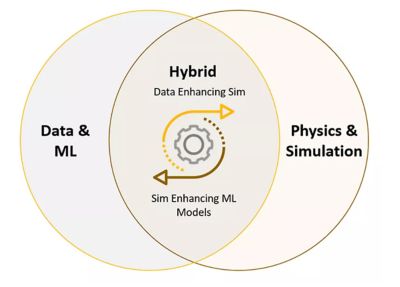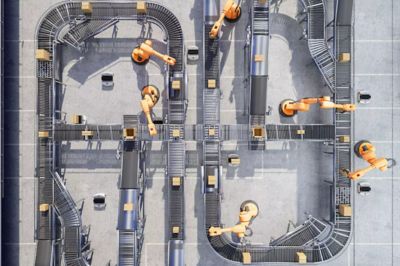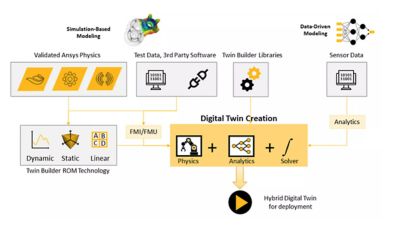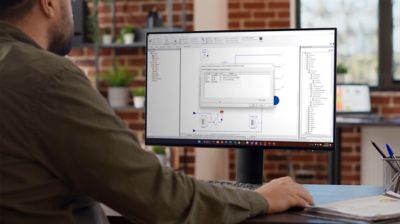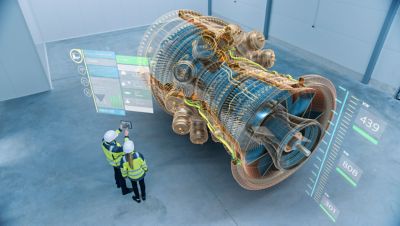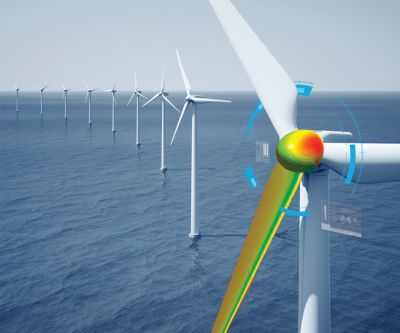-
United States -
United Kingdom -
India -
France -
Deutschland -
Italia -
日本 -
대한민국 -
中国 -
台灣
-
-
产品组合
查看所有产品Ansys致力于通过向学生提供免费的仿真工程软件来助力他们获得成功。
-
Ansys for Hybrid Digital Twins
Combining physics and data modeling to enable real-time monitoring, predictive maintenance, and performance optimization.
The Best of Machine Learning and Physics
A hybrid digital twin is a virtual representation of a connected physical asset made possible by combining advanced simulation and analytics.
Used across various industries, from virtual sensoring to learning unmodeled physics, hybrid digital twins help companies solve many challenges and enable real-time monitoring, predictive maintenance, and performance optimization of systems and processes.
-
Real-time monitoring

-
Predictive maintenance

-
Systems performance optimization of systems

-
Systems performance of processes

Ansys Introduces Hybrid Digital Twin
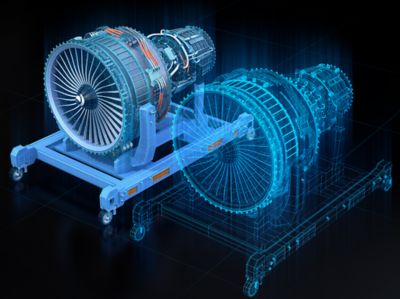
Reusing engineering design in operations
A hybrid digital twin originates during design, utilizing design models to capture intent and specs. Reduced Order Modeling (ROM) technology enables complex CFD and FEA models for real-time applications, broadening possibilities for complex systems.
Look-ahead performance
Monitoring assets in the field is valuable, but predicting future behavior is ultimately where digital twins provide maximum value. Hybrid digital twins are critical for look-ahead performance prediction in unbounded conditions.
Designing for data and learning from data
A hybrid digital twin embodies a synergy between data and simulation where the simulation provides more data for data models. In contrast, sensor data from the field teaches the model about operational performance.
Closing the design loop
By continuously learning from field data, an updatable twin shows which components and parameters change over time. This information can predict the remaining useful life of a piece of equipment. Tracking this is valuable for predictive maintenance and design teams to see whether equipment performs as expected.

Using Ansys technology, Bosch is creating digital models that take advantage of the capabilities of artificial intelligence (AI) and machine learning. See how the digital twins are driving the latest innovations in electric vehicle design.
Featured Resources
BLOGS
WEBINAR ON DEMAND
VIDEOS
The Twin Talks: Introduction to Hybrid Digital Twins
The Twin Talks: Introduction to Hybrid Digital Twins
In this 3rd episode of The Twin Talks, we'll discuss the hybrid digital twin concept and how this technology represents a transformative approach in the digital twin landscape, distinguishing themselves from traditional digital twins by seamlessly integrating physics-based simulation and real-time data analytics. We'll also highlight the key benefits of adopting hybrid digital twins and how they offer the ability to optimize operations, enhance decision-making, and improve overall performance.
现在就开始行动吧!
如果您面临工程方面的挑战,我们的团队将随时为您提供帮助。我们拥有丰富的经验并秉持创新承诺,期待与您联系。让我们携手合作,将您的工程挑战转化为价值增长和成功的机遇。欢迎立即联系我们进行交流。












